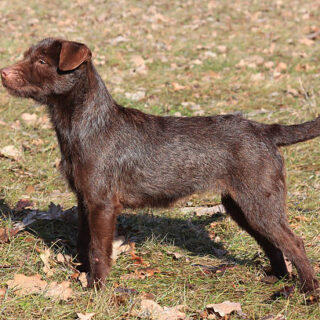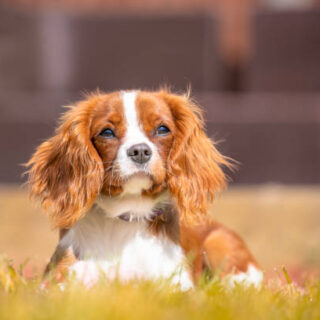Your cart is currently empty!

Single Product
Cesky Terrier
Cesky Terrier The Cesky Terrier is the national dog of the Czech Republic and was developed by geneticist Frantiek Horák through the crossing of Scottish Terriers with Sealyhams. This is a relatively new breed, Mr Horák starting his breeding programme in the late 1940s. The Cesky Terrier was recognised by the FCI in 1963 and…
Description
Cesky Terrier
The Cesky Terrier is the national dog of the Czech Republic and was developed by geneticist Frantiek Horák through the crossing of Scottish Terriers with Sealyhams. This is a relatively new breed, Mr Horák starting his breeding programme in the late 1940s. The Cesky Terrier was recognised by the FCI in 1963 and by The Kennel Club in 1990.
The Cesky has a gentle manner with people, but is still capable of seeing off vermin. Unlike many of the trimmed terriers which have hand stripped wiry coats, the Cesky has his body coat clipped.
General appearance of Cesky Terrier
Short-legged, rectangular, drop-eared and long-coated. Well made and well muscled.
Cesky Terrier Characteristics
Very agile working terrier, hardy and tough, plenty of stamina.
Temperament of Cesky Terrier
Friendly and companionable. Somewhat reserved towards strangers, but neither aggressive nor of a nervous disposition.
Head and skull
Relatively long. Skull slightly arched; slight but distinct stop. Head forms a blunt, long but not too broad triangle when viewed from above. Nostrils large. Nose black in grey-blue dogs; liver in light brown dogs.
Eyes of Cesky Terrier
Medium-sized, friendly expression. In blue-grey dogs black or brown; in light brown dogs light to dark brown.
Ears
Medium size, triangular, high set and folded above the level of the skull. Pendulous, carried close to cheeks.
Mouth
Jaws strong with a perfect, regular and complete scissor bite, i.e. upper teeth closely overlapping lower teeth and set square to the jaws. Level bite acceptable.
Neck
Medium long, elegant but strong. Slightly loose skin at throat.
Forequarters
Muscular, well-laid shoulders. Elbows free moving. Forelegs straight, strong-boned.
Body
Medium length, rising slightly to well-arched loin. Brisket more cylindrical than deep. Ribs well sprung, loin relatively long, broad and muscular. Slight tuck up.
Hindquarters
Strong, muscular upper thighs, short lower thighs. High set, strongly developed hock. Hind legs stand parallel.
Feet
Round, arched and well padded. Forefeet larger than hindfeet.
Tail
Long, medium set. At rest hangs with tip slightly raised. Carried slightly upwards when dog is moving.
Gait/movement of Cesky Terrier
Propulsive movement. Brisk and vigorous with plenty of drive. Parallel movement fore and aft.
Coat
Slightly wavy with silky sheen. Not overabundant. Clipped except on foreface and skull (forming beard and brows), legs and belly. Eyebrows prominent. Transition between clipped and unclipped must be gradual. Hair on back and neck no more than 1.5 cm (½ in) long.
Colour
Grey-blue or light brown. Yellow and grey markings allowed on cheeks, underside of muzzle, neck, breast, lower parts of legs and under tail. White collar or tail tip permissible. Skin on grey-blue dog grey; on light brown dog flesh coloured. Striping, (brindling) or solid black coat is only acceptable in dogs under two years of age.
Size
Height 25-32 cms (9¾-12½ ins). Ideal height: dogs 29 cms (11½ ins); bitches 27 cms (10½ ins). Weight 6-10 kgs (13¼-22 lbs).
Faults
Any departure from the foregoing points should be considered a fault and the seriousness with which the fault should be regarded should be in exact proportion to its degree and its effect upon the health and welfare of the dog and on the dogs ability to perform its traditional work.
Note
Male animals should have two apparently normal testicles fully descended into the scrotum.





